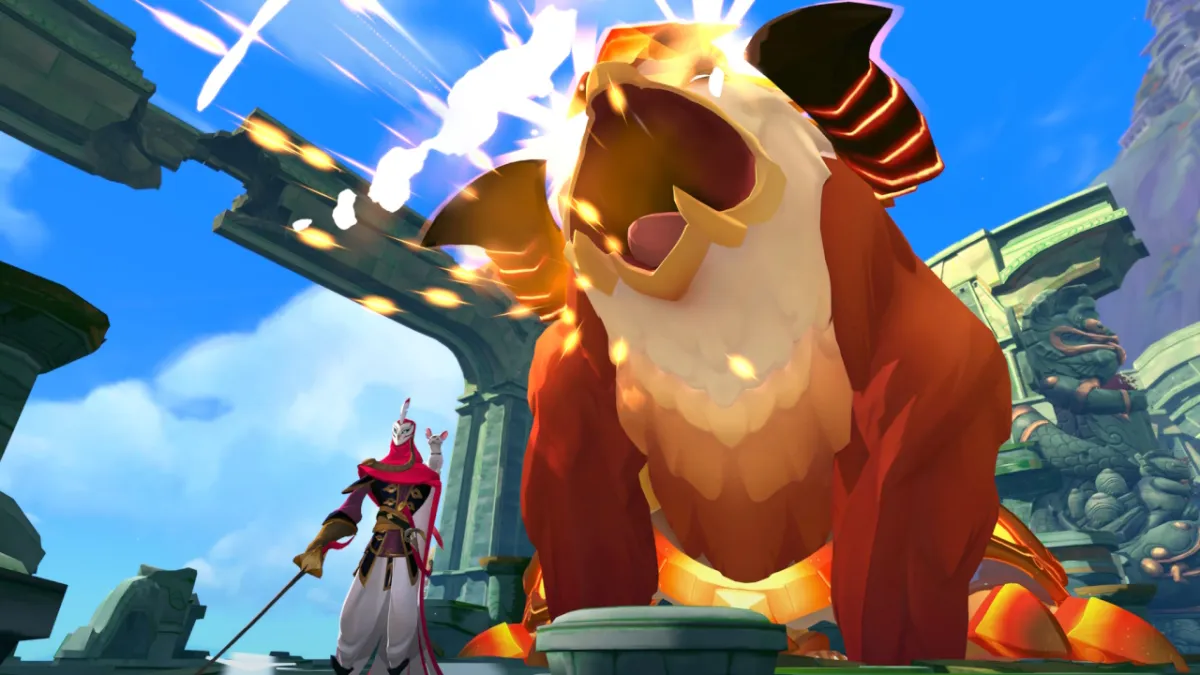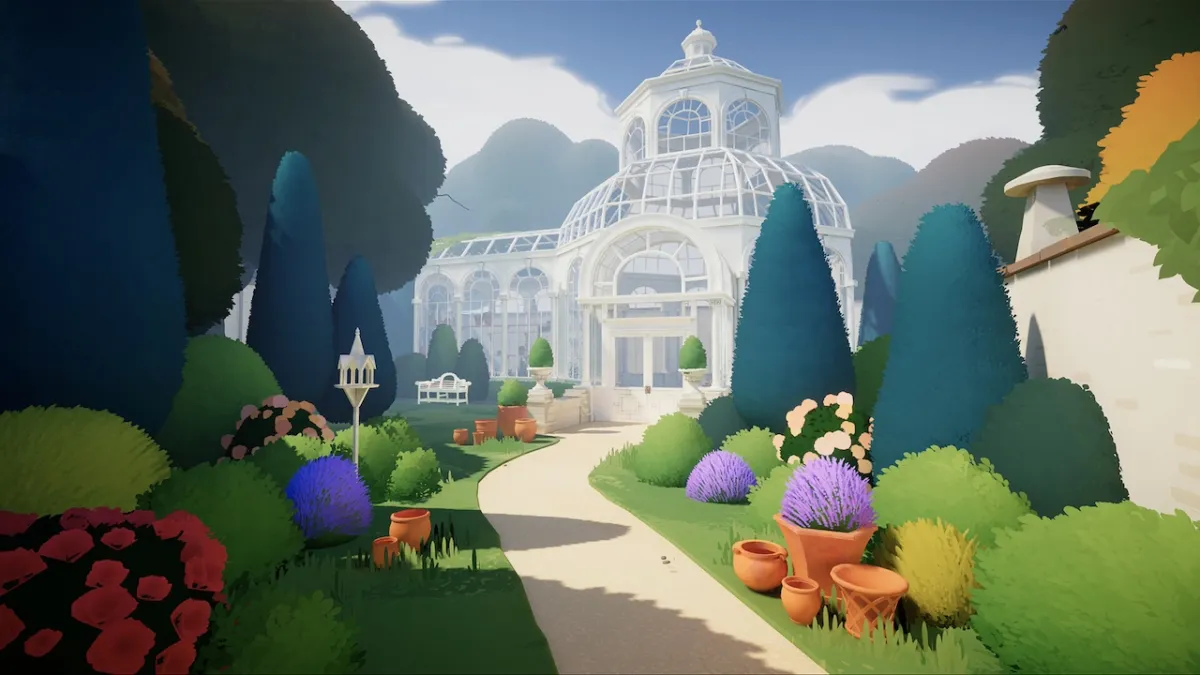Let’s get this out of the way nice and early: it wasn’t until three months after Dungeons was announced, when more specific information began to emerge from the developers, that it became clear the title would take a different approach to certain other Dungeon-builders of the past. Members of the press (myself included) shouldn’t have been so quick to leap to conclusions after seeing screenshots that looked like Dungeon Keeper, but nor should the early marketing buzz about the game have been so coy about the differences for so long. The misconception surrounding the similarity of the two games can only hurt the title, because some people who buy it will end up feeling misled. That’s not something anybody should want.
Oddly enough, it turns out Dungeons is a lot closer to another of Bullfrog’s mid-90s titles: Theme Park. Instead of keeping gormless families amused long enough to fleece them of all their cash in exchange for a crappy balloon, your aim is to entertain the stream of heroes who enter your lair while they build up ‘soul energy.’ Then you kill them, and use prisons to harvest that soul energy. So, ok, yes, that part isn’t so much like Theme Park.
In order to keep the heroes interested in your little underground pad, it’s necessary to decorate the walls and floor with ‘prestige’ items like dusty bookcases, skeletal lamps or eerie crypts and fulfil various needs that your weirdo visitors have. These might be a simple lust for gold (in which case you’ll stick some loot down for them to pocket,) a yearning for ancient textbooks and weapons, or just a desire for a good fight. This process is much the same as placing a series of interesting rides and attractive scenery pieces in Theme Park. Like that game, it’s also important to try to funnel heroes down a preferred path so they’ll encounter prestige items and rooms (rides and shops in Theme Park’s case) in the order you want.
However, Dungeons isn’t as sure or consistent in tone as Theme Park was. Theme Park worked as a pretty brutal satire of capitalism at its most cynical. In order to succeed, it was necessary to bleed customers dry by packing drinks with cheap ice, covering chips/fries with salt to force people into buying more drinks and putting expensive, eye-catching shops at the entrance and exit to your park. Behind the cutesy graphics, the game was one of the most cold, ruthless simulations of business ever released – if those kids didn’t leave your park poorer, you were doing something wrong. In effect, it was far, far more evil than Dungeons hopes to be.
Dungeons seems to be trying to poke fun at something too, but it isn’t quite sure what. There are attempts to lampoon Diablo-style dungeon crawling by having the heroes express thoughts about levelling up and gathering experience points, but the game cuts its own parody off at the knees by quite literally including those same skill trees for your dungeon lord avatar and the levelling up of monsters.
The game also tries to mix this humour with a darker atmosphere, and it doesn’t really work. Early on in the campaign there’s a mission that ends with our dungeon lord nabbing “the seeds of discord” which, we’re told, will bring misery to the halfling kingdom. And that’s just it – we’re told, not shown, the results of our devilish scheme. This breaks one of the most fundamental guidelines of successful narrative. I want to see those halflings suffer like the merry cake-making bastards they are, game, don’t steal this delicious moment from me.
Almost all of the really ‘evil’ actions happen off-camera, while the bits you actually get to play are all too familiar in their boring niceness. Sure, we’re supposedly seeing off morally righteous heroes, but they’re presented as either clueless, greedy chancers or arrogant dicks. Meanwhile, our dungeon lord is characterised as a little hard done by; his girlfriend has betrayed and dethroned him, so now he must reclaim it and then possibly make her jealous by hooking up with some succubus twins or something. Anyway, aside from the dark, gloomy locations we may as well be playing a classic ‘triumph against adversity’ tale. Why is it not me who’s scheming to depose someone while drumming my fingers together and laughing to myself? Why, in this supposedly ‘evil’ title do I never really get to see my actions affect anybody (save for a few witless heroes, who mostly seem to deserve some kind of punishment)?
Still, there are countless games with wonky writing and an atmosphere at odds with itself that have been saved by interesting mechanics. Here I think Dungeons deserves credit for trying something new. The interdependence of the three basic resources in the game – prestige, soul energy and gold – functions rather well. Building prestige items to keep heroes happy (and boost your dungeon lord’s personal abilities) requires soul energy, which can only be effectively gathered from happy heroes. Gold, meanwhile, is required for creating prisons to hold (and drain) captured prisoners, as well as being one of the necessary resources when placing monsters to distract adventurers.
It’s a novel approach to require the player to actually nurture his prey before swooping in at the right moment to finish them off. Using a Tower Defence strategy of trying to kill the heroes as quickly as possible just won’t work here, and for a while that feels quite fresh. What is a little irritating, though, is the pressure placed upon your dungeon lord avatar to do most of the slaying. Monsters are not player controlled and just mill around their designated points, but even when they do encounter heroes they’re largely ineffective at taking them down. It’s possible to level the monsters up (something, incidentally, which the tutorial doesn’t teach you) but scaling them higher than the heroes costs a great deal of soul energy that you tend not to be able to afford.
As a result, Mr. Dungeon Lord has to toddle around doing pretty much everything. As the levels progress, this can get rather tricky. You’ll find that there’s one hero wandering around, plump with soul energy, who you want to take out. Unfortunately, he’s surrounded by others who you don’t wish to harvest yet and who may be able to beat you in combat (resurrecting you at your dungeon heart for a health hit.) It’s possible to swoop in and take your target down (there’s even the helpful ability to drag the hero’s portrait onto your hotkey bar to aid with this, plus other spells and skills to aid you) or kite the group around and take pot shots, but neither tactic is very satisfying and quickly loses its lustre when you’re forced to repeat it so often.
Placing prestige items also feels like a partially wasted opportunity. It’s clear from the amusing, catalogue-style descriptions and variety of items on offer that at one stage the intention was for players to think quite carefully and spend some time decorating their dungeons. Sadly, the pace of the gameplay and the frequent necessity to just stuff a room full of any old prestige items as quickly as possible removes any of the pleasure from doing this. Too often you’ll end up with a dungeon floor just littered with trinkets in order to complete a mission, which is a shame.
And this is really my main problem with Dungeons. It tries to offer choice and suggests you might be able to run a dungeon with some style and flair, but once you’re beyond the early campaign levels or attempting a more difficult custom game it becomes obvious the game only respects tedious efficiency. You need to squeeze everything out of your resources and make sure you’re not letting any of that sweet, sweet soul energy escape your grasp. With encroaching heroes rising in level every two minutes or so, the game doesn’t let up – and it either hides, or simply doesn’t provide enough tools to allow you to properly keep track of important matters (such as, for example, some kind of pop-up warning about a hero when they reach maximum satisfaction, or the ability to place items while paused.) In fact, it even goes out of its way to distract you with irritating side-quests which more often than not are just an excuse to rob you of some resources.
This isn’t just a case of the game being too hard (though it gets undeniably tough at times,) but an indication that it doesn’t entirely know what it wants to be. It’s admirably ambitious to use aspects of real-time strategy, building sims, tower defence and RPGs all at once, but when the sellotape holding them together peels off all you have left is a baffling pile of parts. Aspects of the title like preparing prestige items and special rooms, things that seem as though they deserve time and thought, are at odds with the oft-frantic pace, and playing can feel more like a stressful administrative task than anything truly engaging. The game borrows heavily from the, well, theme of Theme Park, but fails to replicate the emotional connection that title built with the player. Occasionally the pieces click together and the somewhat unique premise manages to charm for a spell, but those moments are too scattered and the confused tone and clunky execution inevitably ruin the mood. There’s a great idea in here, but it’s buried deep. Really deep.



